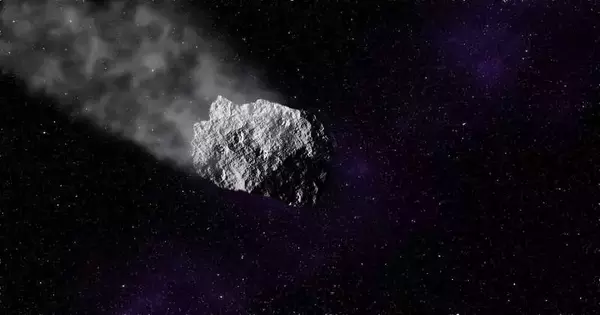A bright fireball that could be seen all over Europe resulted from an asteroid hitting Earth just hours after it was discovered on Monday.
According to a press release issued by the European Space Agency, astronomer Krisztián Sárneczky discovered an asteroid at Hungary’s Piszkéstet Observatory around 12:18 p.m. Eastern Time on Sunday. The object was initially identified as Sar2667. The International Astronomical Union Minor Planet Center was informed shortly after a second observation was made.
“100% impact probability” The Vinjan Observatory in Croatia confirmed the asteroid approximately forty minutes after it was discovered. According to the ESA, a number of impact assessment systems observed the asteroid and determined that it has a “100% impact probability” above the English Channel, which is the Atlantic Ocean strip that separates northern France from southern England.
Fortunately, it was only a three-foot asteroid, officially designated 2023 CX1, and did not pose any threat to humanity or Earth.
The European Space Agency (ESA) reported that astronomers around the world continued to observe the asteroid through Sunday night and Monday morning, spotting it until it became “invisible” as it fell into Earth’s shadow. Asteroid 2023 CX1 hits Earth and transforms into a fireball that can be seen throughout Europe.
The asteroid entered Earth’s atmosphere at 2:58 a.m. UT (9:58 p.m. ET), transforming into a “beautiful fireball” that streaked across Europe’s skies. According to NASA, fireball is another name for a typically bright meteor that has exploded in Earth’s atmosphere.
The International Meteor Organization reported receiving 61 reports of the fireball in Wales, England, France, Belgium, the Netherlands, and Germany, indicating that the meteor was observed throughout western Europe.
According to the European Space Agency, it’s possible that some of the asteroid’s fragments survived and made it to Normandy, France, near the coast north of Rouen.
On Twitter, a number of videos of the fireball were shared.
Space rocks were spotted not long before hitting Earth.
Authorities said this was the seventh time a space rock had been identified not long before it hit Earth.
One of the latest occasions likewise elaborates Sárneczky: two hours after he first observed it, in March 2022, an asteroid about 6 1/2 feet in diameter and the size of a refrigerator struck Earth.
Even though asteroids like 2023 CX1 don’t pose a threat to humans, NASA’s Asteroid Watch said they are “excellent exercises” in Earth’s planetary defenses. The European Space Agency said that spotting these asteroids just before they hit Earth is “a sign of the rapid advances in global detection capabilities.”





